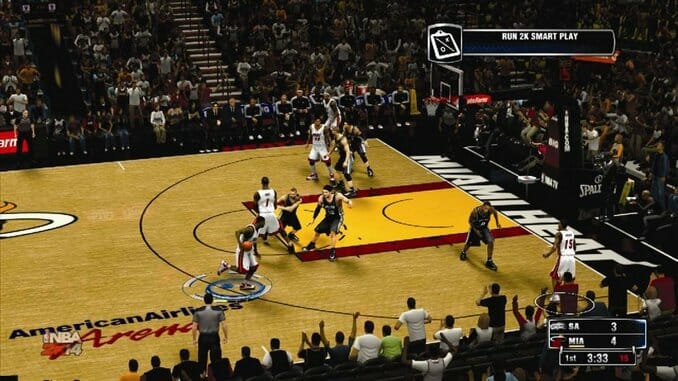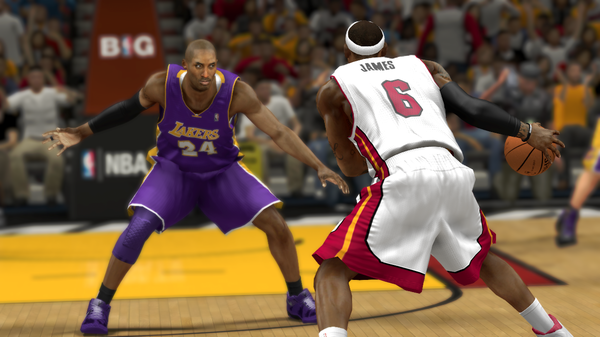NBA 2K14 (Multi-Platform)

The first thing you see when you start NBA 2K14 is a real-life LeBron James. Set against a black background, he looks up at the camera and says, “Basketball isn’t easy. All my life I’ve been striving to make myself better. It’s a full-time commitment. To be the best, you have to work the hardest. You have to chase what seems impossible, over and over and over again.” The monologue continues on, down a predictable path, before Nas’ “Hate Me Now” starts to blare in its gothic hip hop glory.
Like the beautiful game it simulates, NBA 2K14 isn’t easy. It punishes you for every mistake, it demands mastery and it can feel exhausting to play—if you’re playing well. Mechanically, it’s deep and refined. It has a move list, as long a fighting game’s, for all the things you can do with a basketball. It has statistical attributes for every player, with unique models and animations. If you’re turning your nose up at this sports game and us sports gamers, stop now. NBA 2k14 is the bastard child of Dark Souls when it comes to difficulty, refinement and controllability; the swagged-out cousin of XCOM when it comes to stat-mongering; a more mechanically satisfying approximation of Skyrim when it comes to progression in the game’s My Player mode.
At the game’s core is the simulation of basketball. The NBA 2K series isn’t afraid to change and evolve: This year’s entry sees shot modification and dribble moves anchored to the right analog stick. Passing has been injected with more fluid controls and there’s a new option for “flair passes,” which are borderline useless but do look cool and completely humiliate the person sitting on the couch next to you, if you pull them off. Defense is better too, especially in the low post: You can now stop big men when they get close to the basket, something that was nigh impossible in last year’s installment.
Multiplayer, though, is where this game shines. Playing against the A.I. gets a little lonely. The announcers start to sound weird and robotic, narrating the action for an audience of one. You get bored. But convince someone to take to the court with you and it’s hard not to have a good time. The announcers become jeering jesters and cheerleaders. Your gut will burn a little bit when they tell you how awful your play just was and your competitor smirks in agreement. The basketball simulation is identical throughout, but the multiplayer mode is the most addicting.
There is a certain amount of kinetic joy in playing NBA 2K14, and it stems from the controls. Each relatively lifelike player has a unique speed rating, and when you have a fast one, you feel it. You feel how gigantic and lumbering the bigger players are. Nothing is floaty—except a floater, if you choose to shoot one—and having the ball in your hand, weaving through the lane and making the split-second decision between shooting or passing to the open man is consistently, bafflingly thrilling. You will, for lack of a better term, whoop and holler when you slam dunk the ball or block your opponent’s shot. You have a plethora of shot types to choose from, from bankers to reverse lay-ups and alley-oops. They’re simple to execute in practice, when you can focus, but in games, they’re difficult and thrilling. When you pull one off at an especially clutch moment, it’s joyful. One likes to think this is similar to what NBA rookies feel.
The true standout, though, is the My Player mode. Here, you create a NBA player, participate in a “showcase game,” and then get drafted based on your performance. Somehow, this feels very important—maybe because you can’t control it. Where will you go? Who will you play with? Will you be picked early? And then when you get in the league, you feel a genuine sense of wonder at who your silly little player is up against. It’s palpable, leading onlookers to say things like, “Dude, you’re guarding LeBron.”
